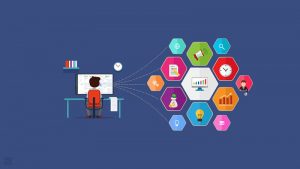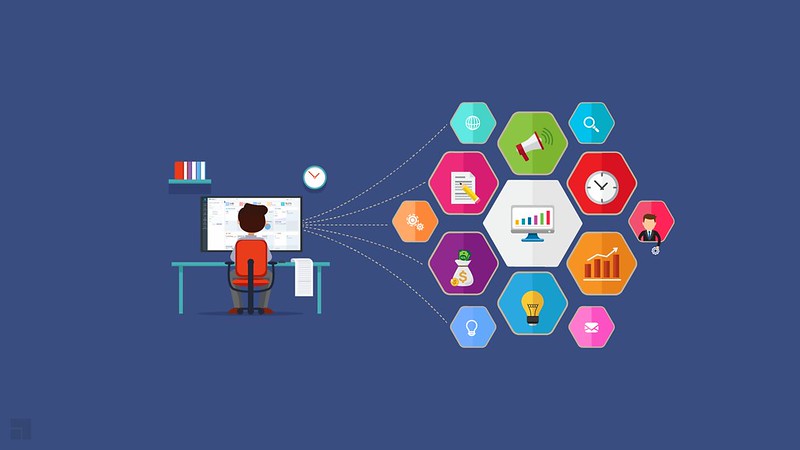
Image Credit: deepak pal
Modern CIOs need to understand that Business Intelligence (BI) leverages software and services to transform data into actionable insights that inform an company’s strategic and tactical business decisions. These BI tools access and analyze data sets and present analytical findings in reports, summaries, dashboards, graphs, charts and maps designed to provide users with detailed intelligence about the state of the business. In IT the term business intelligence often also refers to a range of tools that provide quick, easy-to-digest access to insights about an organization’s current state, based on available data. The challenge that CIOs are facing is how best to make use of these new tools?
Understanding Business Intelligence vs. Business Analytics
Business intelligence tools provide insights into the current state of the business or organization: where are sales prospects in the pipeline today? How many customers have we gained this month? This information gets to the distinction between business intelligence and another, related term, business analytics. Business intelligence is descriptive, it tells you what’s happening now and what happened in the past to get us to that state. Business analytics, on the other hand, is more of an umbrella term for data analysis techniques that are predictive — that is, they can tell you what’s going to happen in the future — and prescriptive — that is, they can tell you what you should be doing to create better outcomes.
CIOs need to understand that the distinction between the descriptive powers of BI and the predictive or descriptive powers of business analytics goes far beyond just the timeframe we’re talking about. It also gets to the heart of the question of who business intelligence is designed for. BI aims to deliver straightforward snapshots of the current state of affairs to managers. Predictions and advice derived from business analytics requires data science professionals to analyze and interpret, one of the goals of BI is that it should be easy for non-technical end users to understand, and even to dive into the data and create new reports.
Implementing Self-service Business Intelligence
One of the goals of a CIO should be to make it possible for just about anyone to get useful information out of business intelligence tools. This need has given rise to self-service business intelligence, a category of BI tools aimed at abstracting away the need for IT intervention in generating reports. These self-service BI tools allow organizations to make the company’s internal data reports more readily available to managers and other nontechnical staff.
One of the keys to self-service BI success is business intelligence dashboards and UIs that include things like pull-down menus and intuitive drill-down points that allow users to find and transform data in easy-to-understand ways. There will be a certain amount of training required, but if the advantages of the tools are obvious enough, employees will be eager to get on board.
CIOs need to keep in mind that there are pitfalls to self-service BI as well. If you steer your business users into becoming ad hoc data engineers, you can end up with a chaotic mix of metrics that vary across departments, run into data security problems, and even run up big licensing if there’s no centralized control over tool rollout. Even if you have committed to self-service business intelligence within your organization, you can’t just buy an off-the-shelf product, point your staff to the UI, and hope for the best.
What All Of This Means For You
As we move forward there is a potential third wave of disruption on the horizon, something the research firm calls “augmented analytics,” where machine learning is baked into the software and will guide users on their queries into the data. The combinations included in these software platforms will make each function more powerful individually and more valuable to the people using them.
And although BI will remain valuable in and of itself, organizations can’t compete if they’re not moving beyond only BI and adopting things such as advanced analytics as well. Researchers predicts that in the next 3 years organizations offering users access to a curated catalog of internal and external data will realize twice the business value from analytics investments than those that do not.
What CIOs need to understand is that there is a need for reporting, but reporting alone is not enough. If you’re only doing reporting you’re behind already. Unless your reporting is smart and agile, you’re need to understand that you have fallen behind.
– Dr. Jim Anderson
Blue Elephant Consulting –
Your Source For Real World IT Department Leadership Skills™
Question For You: What is the best way to train the rest of the company to make use of business analytics tools?
P.S.: Free subscriptions to The Accidental Successful CIO Newsletter are now available. Learn what you need to know to do the job. Subscribe now: Click Here!
What We’ll Be Talking About Next Time
Guess what? A brand new technology is on the horizon and as the company’s CIO, you are going to be the person who is going to have to implement it. This new technology is called robotic process automation (RPA) and it allows average business users to configure software “robots” to automate what are called “swivel chair” repetitive tasks and maximize the importance of information technology. A company’s motivation for launching an RPA campaign is to put themselves on a much faster automation track while reaping the benefits of increased productivity and lower operational costs. What do CIOs need to know in order to introduce this new technology into their company?

